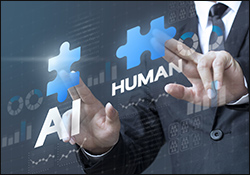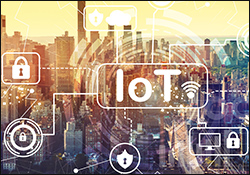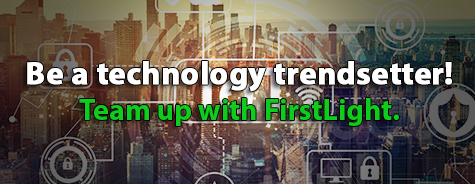
The new year has officially begun. The champagne bottles are empty. The ball has dropped. And all the confetti has been swept up.
It’s the perfect time to take a look at the technology trends that will be hot in 2019.
Many of this year’s trends may look familiar, but they have re-emerged in new forms. As these technologies evolve and become more advanced, companies are discovering new, innovative use cases to modernize and improve today’s business, manufacturing, and health care processes.
Here is a closer look at 5 of the trends that will influence technology in 2019:
1) Artificial intelligence (AI)
 AI isn’t new, but more industries are embracing it and finding new ways to use it. AI leverages machine learning and natural language processing to enable computers to think more like people. With AI, companies can analyze encyclopedic amounts of information to draw hypotheses. Application developers are increasingly building AI functionality into software.
AI isn’t new, but more industries are embracing it and finding new ways to use it. AI leverages machine learning and natural language processing to enable computers to think more like people. With AI, companies can analyze encyclopedic amounts of information to draw hypotheses. Application developers are increasingly building AI functionality into software.
At the beginning of the year, the Forbes Technology Council highlighted several industries that will be taking advantage of AI in the near future, including finance, health care and manufacturing. Forbes predicted that manufacturers will use AI to improve quality and automate processes, while health care will use it to improve diagnoses and track population health. https://www.forbes.com/sites/vishalmarria/2018/09/26/is-artificial-intelligence-replacing-jobs-in-banking/#47eb07cf3c55
2) Smart cities
Smart cities are an extension of IoT (Internet of Things). IoT has evolved from a technology used in smart homes to automate things (such as security and atmospheric conditioning) to a way to connect and coordinate large municipal infrastructures.
Sensors in connected devices can be used to regulate traffic, control street lights, and manage energy consumption. Research conducted by the McKinsey Global Institute found that smart cities are able to reduce crime by 30% to 40% and increase emergency response times by 20% to 35%.
3) Internet of Bodies (IoB)
 AI and IoT can be combined to create an internet of bodies (IoB) for health care. Patients’ bodies can be connected to the internet through devices that are implanted or ingested. These devices monitor blood sugar levels and heart rate or deliver medications.
AI and IoT can be combined to create an internet of bodies (IoB) for health care. Patients’ bodies can be connected to the internet through devices that are implanted or ingested. These devices monitor blood sugar levels and heart rate or deliver medications.
IoB takes wearable medical devices to a whole new level. Worn or implanted, when medical devices are connected through the internet, they can provide a more complete picture of patient health. When combined, readings from various devices can be used to diagnose a chronic condition or prevent a heart attack, stroke, or diabetic coma.
4) Digital mesh
The expanded use of connected IoT devices has resulted in the emergence of a digital mesh. Connected devices in homes, businesses, and communities have the potential to create an immersive experience in which all these endpoints interact.
People can use this digital mesh to access applications, communicate, and interact. The digital mesh even has the potential to merge physical and virtual reality.
5) Augmented analytics
 Analytics are the key to mining business data for insights that can be used to improve business processes and customize customer service. Because analytics are crucial for decision-making, data scientists are continually developing more complex types of analytics.
Analytics are the key to mining business data for insights that can be used to improve business processes and customize customer service. Because analytics are crucial for decision-making, data scientists are continually developing more complex types of analytics.
The latest trend in analytics is augmented analytics. Augmented analytics enable companies to use automation to overcome bias that might influence the results of their algorithms.
Augmented analytics also allow line-of-business employees to accomplish analytics tasks that would have required a data scientist in the past. Gartner predicts that by 2020, 40% of data analytics will be automated.
Staying on Trend
To take advantage of these new trends for 2019, companies need to lay the right technology foundation.
Advanced analytics require adequate data storage capacity and application performance. IoT and the digital mesh rely on high-speed, low latency networks to transmit the data generated by connected devices. Networks also allow companies to process data from IoT endpoints at the edge.
FirstLight offers an extensive high-speed fiber optic network that empowers businesses in the Northeast to adopt today’s technology trends. We specialize in providing networking, data center, and cloud solutions to organizations in a variety of industries, including health care, finance, education, and government.
Be a technology trendsetter. Team up with FirstLight.





















